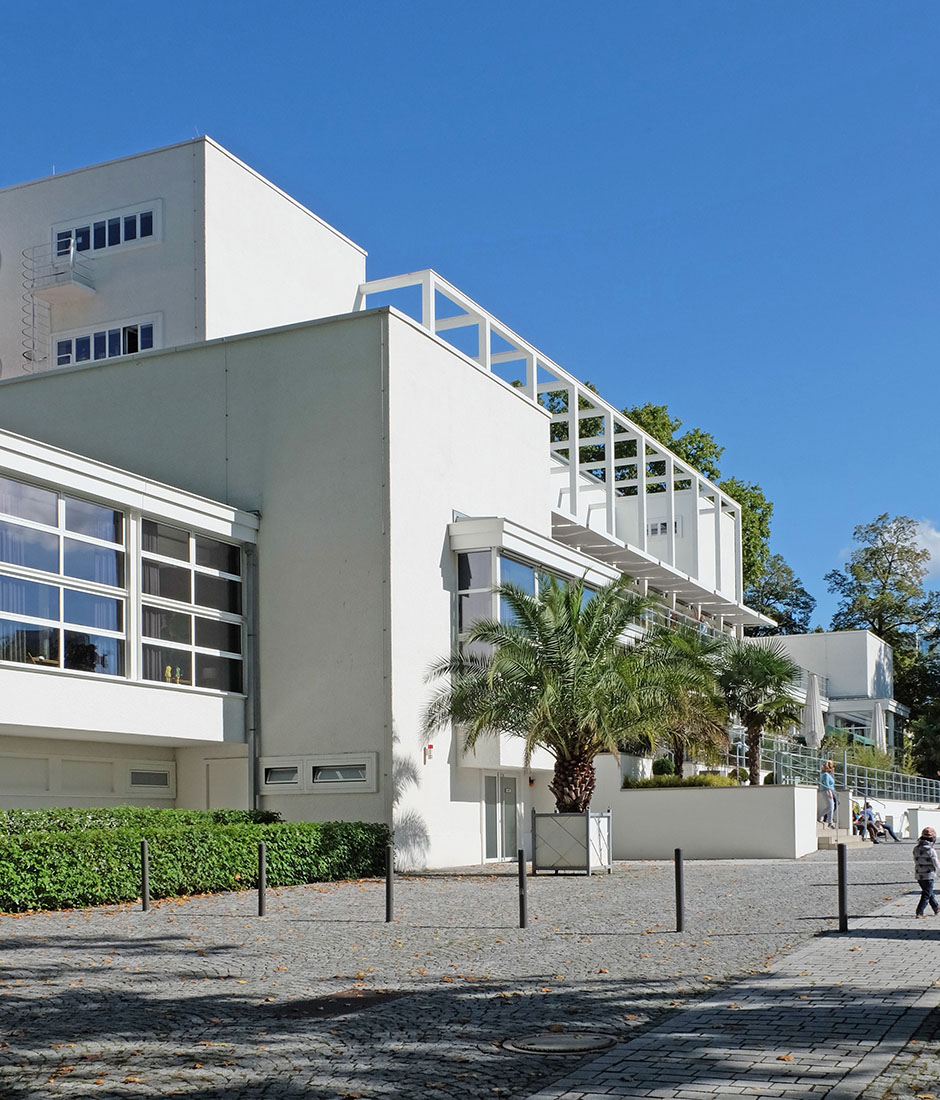 |
 |
 |
 |


Gesellschaftshaus Palmgarten
Palmengartenstrasse 11, Frankfurt
2002 - 2012
The Palmengarten in Frankfurt was developed in the mid-19th century and is one of the largest botanic gardens worldwide. The Gesellschaftshaus Palmengarten, situated within the park and designed by Friedrich Kayser in a historicist style, opened in 1871. The combination of a palm house together with a highly representative building counts as one of the rare remaining examples of this architectural genre. The overall building was modelled on terminal railway stations with their stone buildings and transparent halls, while the steel and glass construction of the palm house was inspired by the buildings of the Paris World Fair. The core of the Gesellschaftshaus centred around a highly decorative ballroom with surrounding gallery and adjacent banqueting rooms. Only seven years after its inauguration the building was destroyed by fire, to be rebuilt one year later. The interior was subsequently redesigned by Ludwig Neher at the end of the 19th century.
In 1928 the architects Martin Elsaesser and Ernst May remodelled the south wing in a Modernist style. The west wing of the building, damaged in World War II, was replaced by a new construction in the 1950s. Through this most recent conversion the ballroom and its surrounding gallery underwent dramatic changes. This included the skylight and the windows being concealed and the mural paintings and wall decorations disappearing behind wall panelling. Following its diverse history, the Gesellschaftshaus Palmengarten has now become a listed architectural monument.
In 2002 David Chipperfield Architects won the competition to restore and modify the Gesellschaftshaus Palmengarten. A new structure has replaced the west wing from the 1950s. The main entrance on the south side of the building leads the visitor to the foyer, ballroom, restaurant and new lecture theatre at ground floor level while the first floor accommodates further rooms for conferences and private functions. The ballroom has been restored to its late 19th century appearance, with its original room structure. Later alterations have been removed, the main structural elements of the decoration scheme recovered and the existing historic fabric carefully cleaned and repaired using the original techniques. Once more the ballroom is daylit through the skylight and the windows to the Palm House, which was lost since the 1950s.
The chandeliers, lost during the war, have been reconstructed true to the original. In addition to the restoration work, the ballroom has state-of-the-art staging and the whole building is equipped with modern building technology. The stairwell designed by Elsaesser has been fully restored. Following its restoration and modernisation the Gesellschaftshaus Palmengarten once again provides an ideal location for hosting cultural events and activities.
(Text: David Chipperfield Architects)